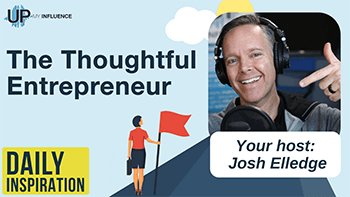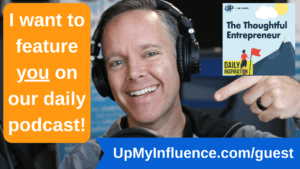THE THOUGHTFUL ENTREPRENEUR PODCAST
In this episode of the Thoughtful Entrepreneur, your host Josh Elledge speaks with the Founder of Jimmy Burroughes Leadership, Jimmy Burroughes.
Burnout is a common issue in workplaces worldwide, affecting both employees and leaders. However, there are ways to prevent it and build a high-performance organizational culture. Jimmy Burrows, the founder of Jimmy Burrows Leadership, shared five strategies. These include identifying unnecessary tasks, disconnecting from technology to access the subconscious, creating meaningful work, assessing five variables in your routine, and practicing self-care. Burnout can have long-term effects on your personal and professional life, so it's crucial to take action to prevent it. Implementing these strategies can reduce stress, increase motivation and engagement, and improve your overall well-being. Remember to assess your routine regularly and prioritize self-care to prevent burnout in the workplace.
About Jimmy Burroughes:
Jimmy, an ex-British Military Officer and successful global people leader, is revolutionizing team leadership. Dissatisfied with traditional methods that lead to burnout and underperformance, Jimmy devised a unique approach to create high-performance cultures. This research-based program enhances profit and staff engagement and prevents burnout. It's explicitly designed for leaders aiming to optimize their potential without compromising personal life or team well-being.
An avid scuba diver and hill runner, Jimmy divides his time between the beach and central Mexico, constantly on the hunt for new property projects alongside his partner and dog. Jimmy is transforming the leadership landscape with his diverse experience and innovative methods.
About Jimmy Burroughes Leadership:
Jimmy Burroughes Leadership specializes in aiding leaders to significantly improve their business outcomes without increasing their workload. The focus is on fostering a team culture emphasizing trust, connection, and performance. Rather than advocating for more intricate work, it promotes more innovative work by creating a supportive and cooperative environment. This philosophy roots in the belief that such a culture leads to enhanced business results and a more engaged and productive team.
Leveraging Jimmy's military and corporate leadership experience, his approach offers a novel and effective pathway to business transformation. The ultimate goal is to help leaders unlock their full potential while ensuring a balanced and fulfilling work-life dynamic.
Apply to be a Guest on The Thoughtful Entrepreneur: https://go.upmyinfluence.com/podcast-guest
Links Mentioned in this Episode:
Want to learn more? Check out Jimmy Burroughes Leadership website at
Check out Jimmy Burroughes Leadership on Linkedin at
https://www.linkedin.com/company/jimmyburroughesleadership/
Check out Jimmy Burroughes Leadership on Instagram
https://www.instagram.com/jimmybleadership
Check out Jimmy Burroughes Leadershipl on Facebook at
https://www.facebook.com/103286358458178
Check out Jimmy Burroughes Leadership on TikTok at
https://www.tiktok.com/@jimmybleadership
Check out Jimmy Burroughes on LinkedIn at
https://www.linkedin.com/in/jimmyburroughes/
Don’t forget to subscribe to The Thoughtful Entrepreneur and thank you for listening. Tune in next time!
More from UpMyInfluence:
We are actively booking guests for our The Thoughtful Entrepreneur. Schedule HERE.
Are you a 6-figure consultant? I’ve got high-level intros for you. Learn more here.
What is your #1 Lead Generation BLOCKER? Take my free quiz here.
Want to learn more about all the podcasts managed by UpMyInfluence? Opt in here.

